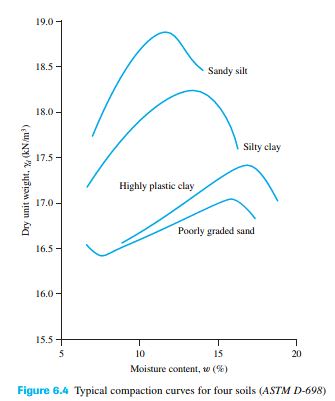Looking for any data or experience working with low unit weight soils. I drilled a site for a new project which will have earthwork cuts and fills. We ran Standard Proctor tests on two bulk samples and got very low unit weights, 76 pcf and 83 pcf with optimum moistures around 30 percent. Further testing and samples of the site indicated a bulk of proposed cut materials falling in this 76 pcf to 89 pcf range. The soils were sandy silts, with around 60 percent passing the #200 sieve. These are residual soils. In-situ moistures were quite high, upwards of 40 to 60 percent. We are awaiting some triaxial shear test results on remolded samples.
Possible concerns on these soils are are they suitable to be used as structural fill under slabs, roads, structures? Will they be overly susceptible to deterioration during construction? Will it be realistic to dry these soils to be used as fill? Assuming I get decent results back from the Triaxial testing, should the contractor plan a very large contingency to deal with trying to build with these soils? For reference, typcial soils in our area are silty sands or sandy silts with max. dry density's per Standard Proctor of 95 pcf and greater.
Possible concerns on these soils are are they suitable to be used as structural fill under slabs, roads, structures? Will they be overly susceptible to deterioration during construction? Will it be realistic to dry these soils to be used as fill? Assuming I get decent results back from the Triaxial testing, should the contractor plan a very large contingency to deal with trying to build with these soils? For reference, typcial soils in our area are silty sands or sandy silts with max. dry density's per Standard Proctor of 95 pcf and greater.

